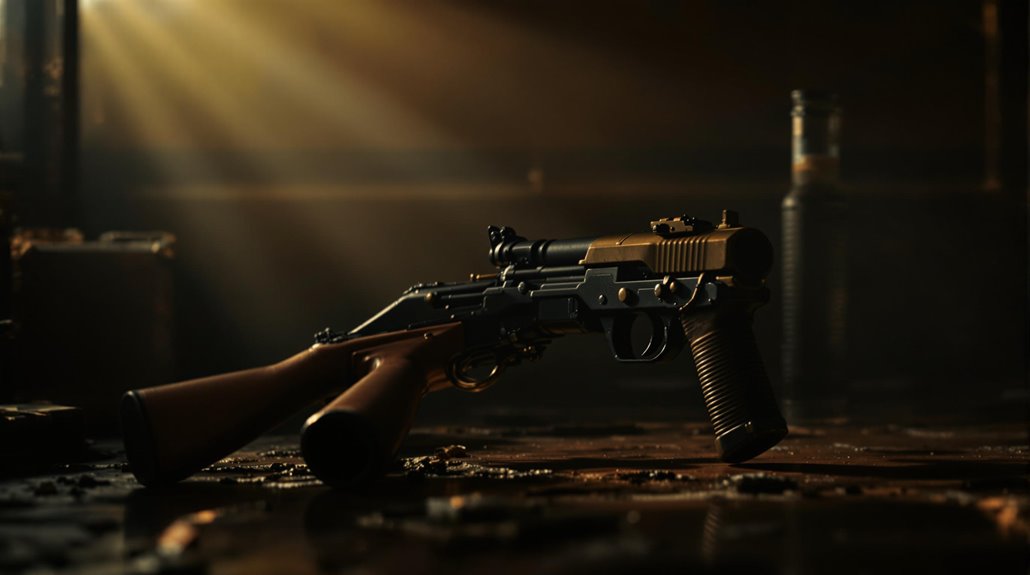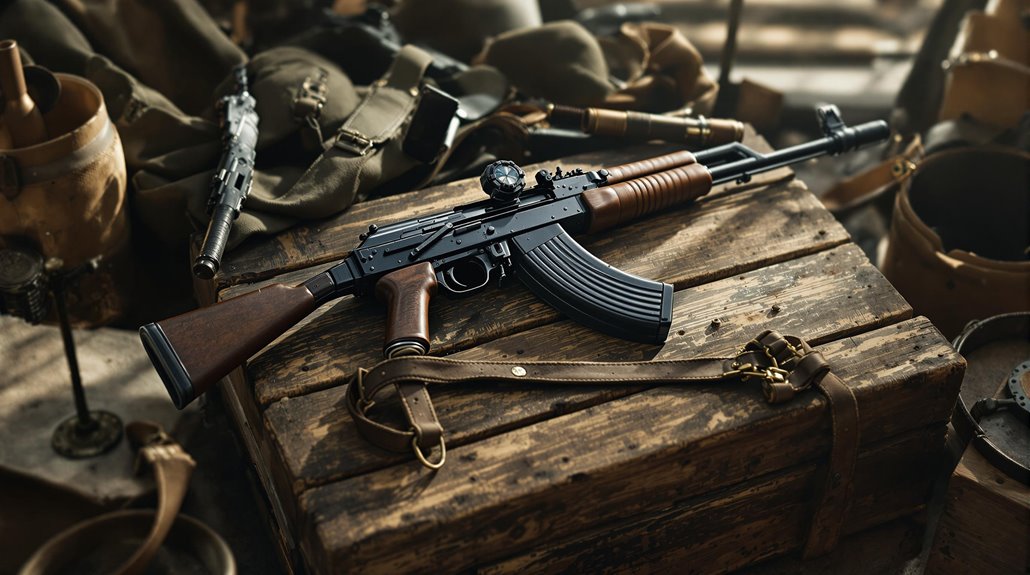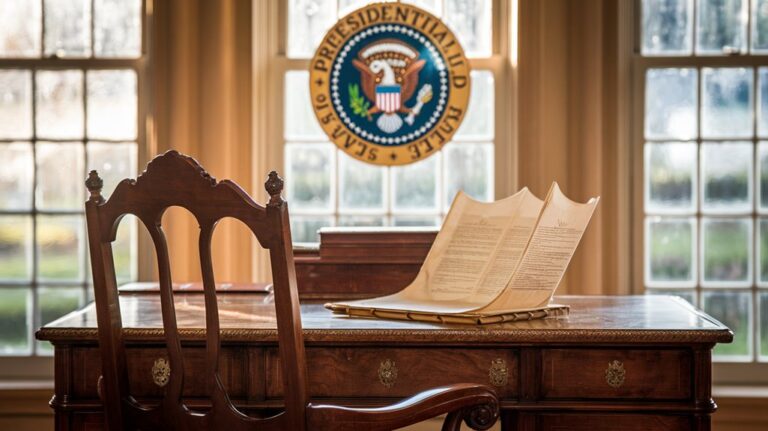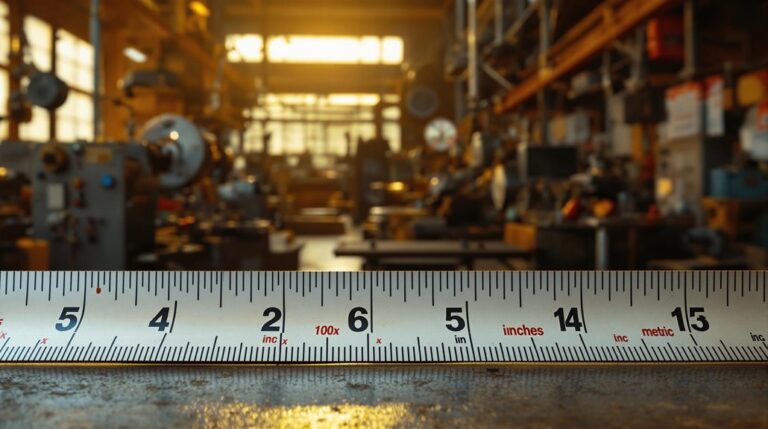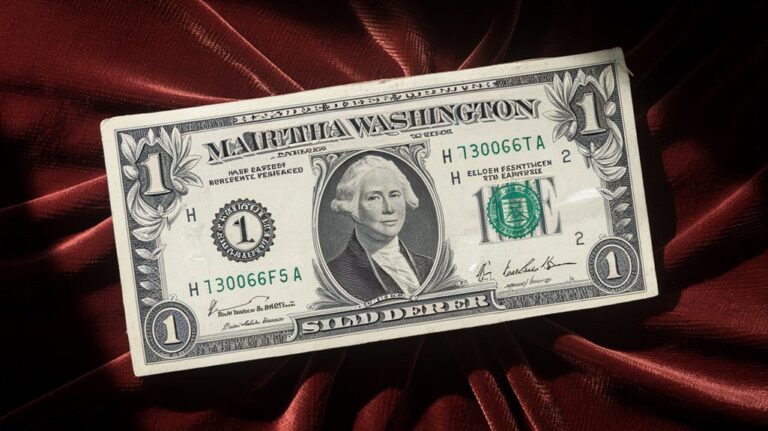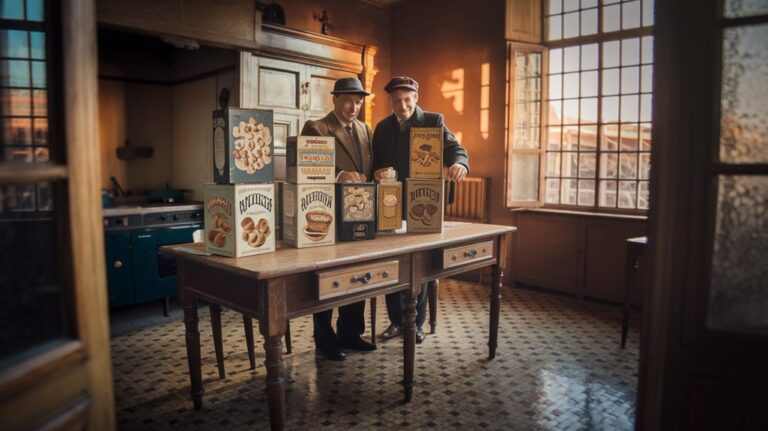From Gangsters to GIs: The Tommy Gun’s Infamous Journey
Like Dr. Jekyll's transformation into Mr. Hyde, the Thompson submachine gun's journey from military prototype to gangster's weapon of choice represents one of America's most striking metamorphoses in firearms history. You'll find that this iconic weapon's path weaves through the dark alleys of organized crime before emerging as a trusted companion of Allied forces. Its story mirrors the nation's own struggles with power, violence, and redemption during the tumultuous decades between the World Wars—and there's much more to uncover.
The Birth of an American Icon
While World War I ended before its deployment, the Thompson submachine gun emerged as one of America's most revolutionary firearms in 1920. Its design origins stemmed from John T. Thompson's vision of creating a "trench broom" that would give American soldiers a decisive advantage in close-quarter combat.
Though the war ended before the first prototype could see action, the weapon's potential was immediately clear. The gun earned several nicknames including The Chicago Typewriter during its infamous history.
You'll find that military necessity drove its early development, with extensive testing at Springfield Armory proving its reliability through 2,000-round trials. The U.S. Navy and Marine Corps quickly recognized its value, placing substantial orders.
Even before its military adoption, Auto-Ordnance adapted the design for civilian use, marketing it to law enforcement, postal workers, and ranchers through magazine advertisements. Before seeing widespread military use in World War II, the Thompson gained notoriety as the weapon of choice for American gangsters during the Prohibition era.
Rise to Infamy: The Prohibition Years
The Tommy gun's path from military innovation to criminal notoriety began in 1925 when Frank McErlane first wielded it on Chicago's violent streets.
Despite its steep $200 price tag, the weapon's evolution made it perfect for gangster culture – you could conceal it in an overcoat by removing the buttstock and using a 20-round clip. The weapon's 600 to 1,200 RPM firing rate made it devastatingly effective in urban warfare. After criminals popularized its use, John Thompson regretted his invention's role in organized crime.
The "Chicago Typewriter" quickly became infamous for three main reasons:
- Al Capone's brutal use during the St. Valentine's Day Massacre
- Hollywood's dramatic portrayal in films and media coverage
- Criminals' own press releases bragging about their exploits
You'd find the public both terrified and fascinated by the Tommy gun's deadly efficiency, leading to its eventual restriction from civilian sales and adoption by law enforcement to combat the very criminals who made it famous.
From Streets to Battlefields
Despite its notorious reputation in criminal circles, military forces worldwide eventually recognized the Tommy gun's exceptional combat value. You'll find its transformation from a gangster's weapon to a military staple began when the U.S. Navy ordered 500 guns in 1928, marking a turning point in its legitimacy. As a weapon chambered for .45 calibre ammunition, it offered impressive stopping power in combat.
During WWII, the Tommy gun proved invaluable in street warfare, with over 1.5 million produced to meet military demands. Allied forces embraced its effectiveness in close combat situations, while military tactics evolved to incorporate its rapid-fire capabilities. The weapon's early models featured up to 1,200 rounds per minute, making it a formidable force in close-quarter combat.
You can trace its impact across global conflicts, from the Malayan Campaign to the Burma Campaign, where it excelled in jungle warfare. Even after WWII, the weapon's influence continued through the Vietnam War and remained in U.S. Navy service until the 1970s.
Engineering Marvel: Inside the Thompson
Beneath the Thompson's battlefield success lay an engineering achievement that revolutionized automatic weapons. The mechanical design featured a sophisticated blowback operation system and the innovative Blish lock, ensuring reliable performance even under harsh conditions.
You'll find the firing mechanism was a marvel of its time, delivering an impressive 600-725 rounds per minute through its finned barrel, which helped dissipate heat effectively. The .45 caliber chambering made it a formidable weapon in any engagement. The gun's development began when Theodore G. Eickhoff proposed using pistol ammunition for a hand-held machine gun.
The gun's evolution brought several key improvements:
- The Cutts compensator addition in 1927 reduced muzzle climb
- The M1928A1's delayed blowback system enhanced control
- The M1 variant's simplified design cut production costs while maintaining effectiveness
Whether crafted from solid steel or aluminum, with genuine American walnut furnishings, every Thompson showcased exceptional workmanship that set new standards for automatic weapons.
Global Impact and Influence
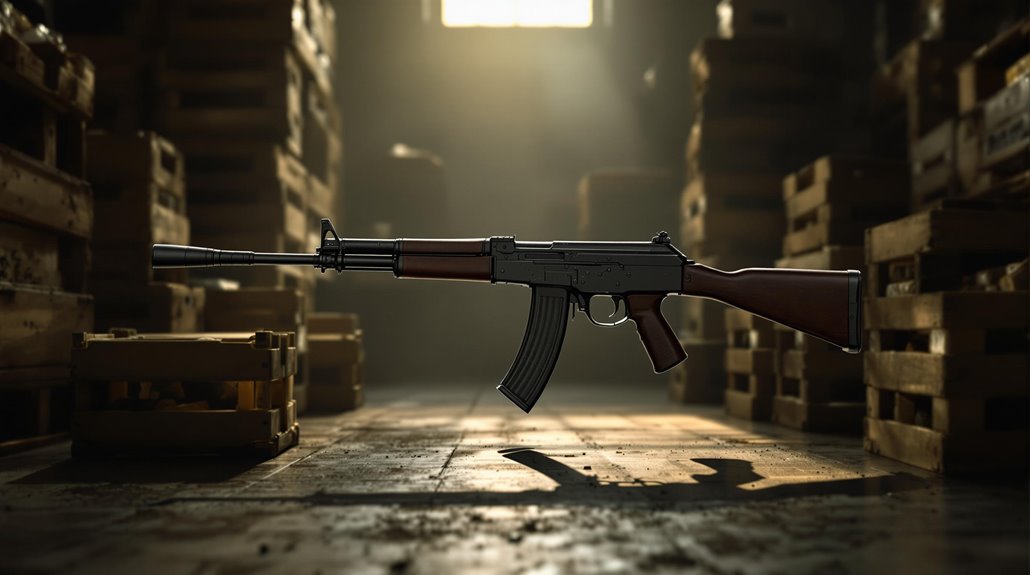
While initially designed for trench warfare, Thompson submachine guns rapidly transformed global military and law enforcement tactics across six continents.
You'll find the Tommy gun's influence in countless global conflicts, from the streets of Dublin during the Irish Republican Army's campaign to the jungles of Vietnam and the deserts of Israel. The John T. Thompson design proved revolutionary in mobile warfare scenarios.
The weapon's proliferation reached unprecedented levels during World War II, with over 1.5 million units produced and distributed to Allied forces worldwide.
You can trace its impact from American police departments to Chinese battlefields, fundamentally changing how forces approached urban combat and close-quarters engagement. The .45 ACP ammunition proved especially effective in close-range urban warfare scenarios.
As the first firearm marketed specifically as a "submachine gun," it set the standard for an entirely new class of weapons, influencing military doctrine and firearms development for decades to come.
Cultural Legacy and Modern Significance
Beyond its military applications, the Thompson submachine gun has secured an indelible place in American popular culture. As a symbol of both law enforcement and criminal enterprise, you'll find its cultural symbolism deeply embedded in entertainment and historical narratives.
The Tommy Gun's modern representation extends far beyond its original context, appearing in:
- Video games and movies, where it's portrayed as a high-powered icon of both heroism and infamy
- Museum exhibits that showcase its pivotal role in shaping American firearms legislation
- Collector's markets, where original models and replicas command significant value
You can't separate the Thompson from its impact on American identity – it's become more than just a firearm. The weapon's original cost of $200 in 1920 made it primarily accessible to organized crime syndicates and government agencies. The US Postal Service was among the first to officially adopt the weapon for law enforcement use.
It represents a complex legacy that continues to influence discussions about gun culture, law enforcement, and national history.

